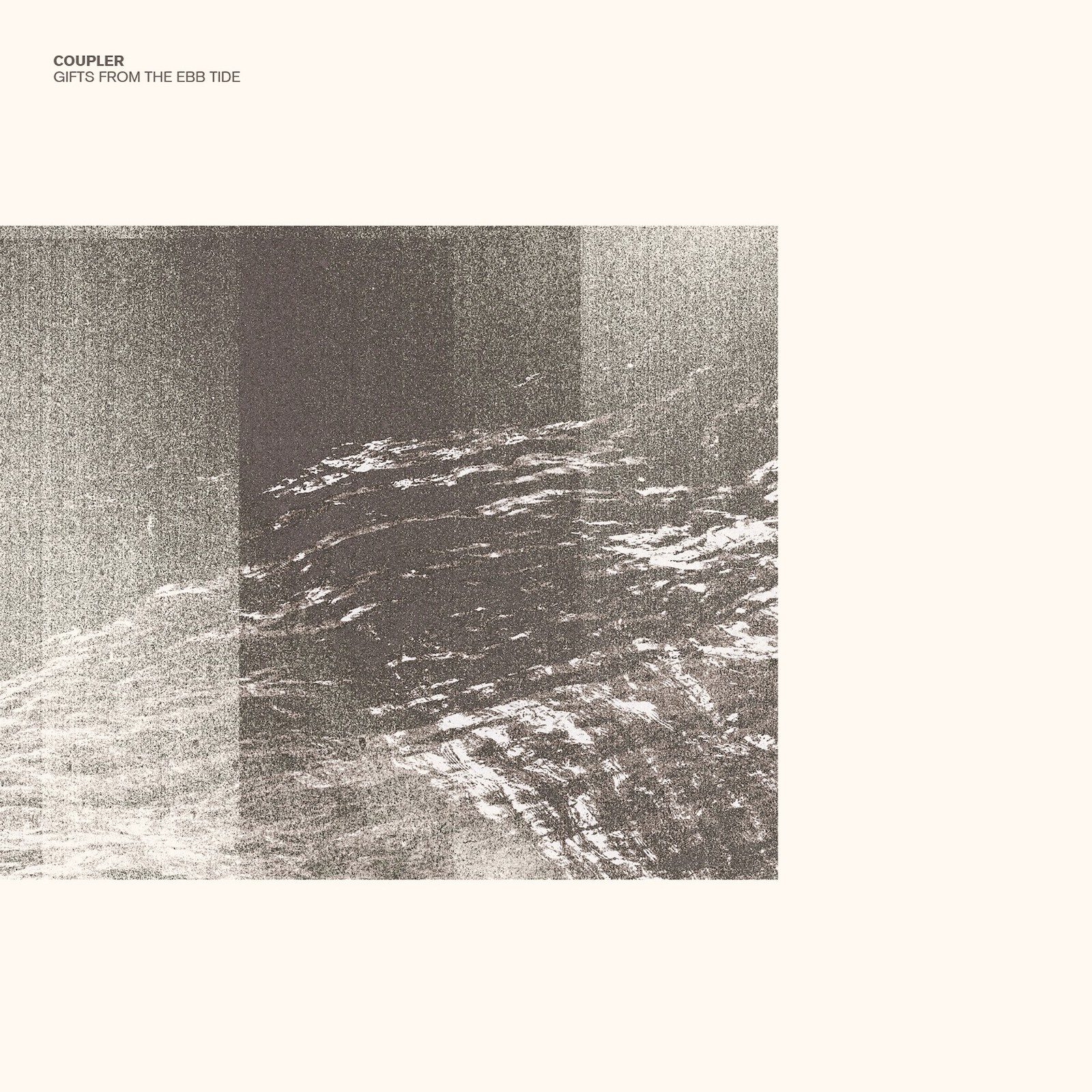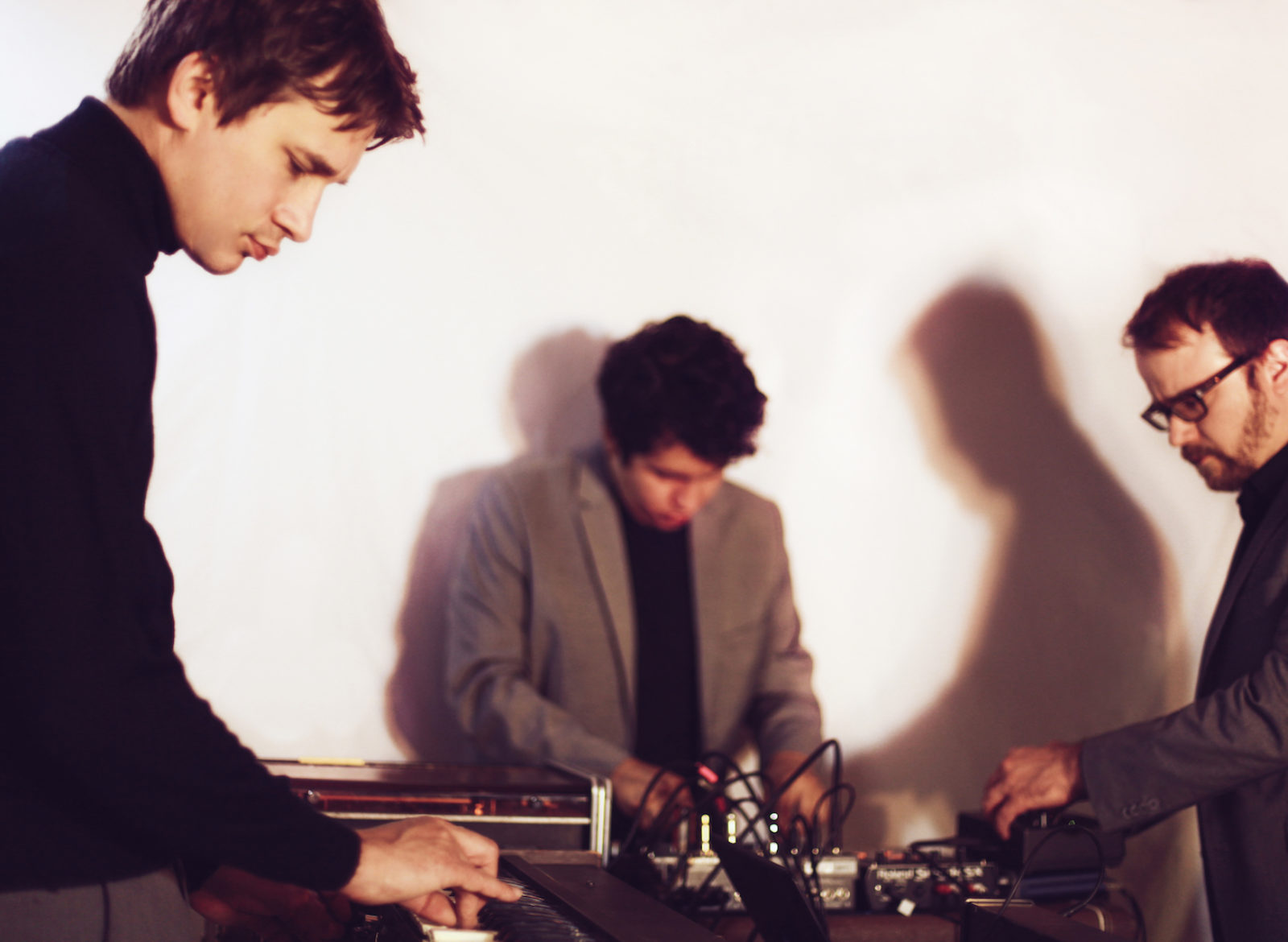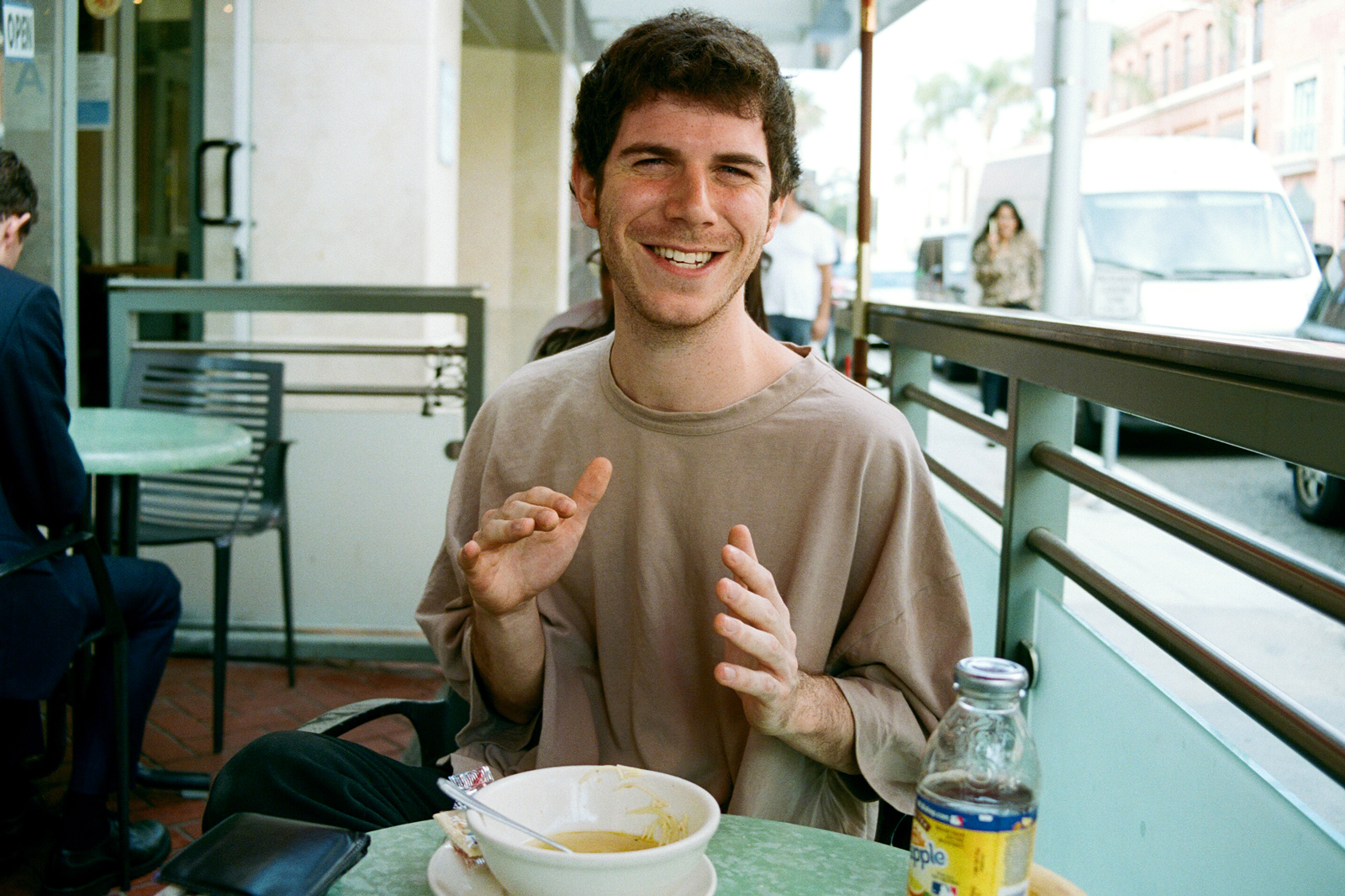Text: Andy Fenwick
Photo: Melissa Madison Fuller
When Lambchop’s Ryan Norris began recording as Coupler, he referred to an early release as “deliberate ambient.” He wasn’t exactly right; or, he was half right in an interesting way (and probably knew it). The problem lies within the well-worth-retiring label “ambient.” To wit: if Brian Eno’s “An Ending (Ascent)” is ambient, then ambient applies, in part, to that track’s two immediate antecedents: Pachelbel’s “Canon” and the 447-year old “Spem in Alium.” Similarly, describing any vocal-less rhythmic music as being part “ambient,” like Harmonia, or Popol Vuh, or Aphex Twin, must also mean that Steve Reich, Philip Glass, and Moondog – all classical innovators reliant on rhythmic repetition – are ambient pioneers.
Which is the long way of saying genre labels are just broken umbrellas. Longtime fans of the genre-transcending Lambchop aren’t surprised, for sure, by Norris’s Coupler projects. “The Hustle,” off Lambchop’s 2016 release FLOTUS directly benefitted from Norris’s electronic work. He’s also in HeCTA with Kurt Wagner and Scott Martin, whose delicious single “Til Someone Gets Hurt” sounded like a Carl Craig remix of Loose Joints/Arthur Russell’s “Is It All Over My Face.”
New release Gifts from the Ebb Tide follows closely on the heels of The Blue Sessions, a project for Third Man Records that saw a band-like expansion of Coupler via musicians Rodrigo Avendano, Rollum Haas, and Matt Glassmeyer. On Gift, Norris completely rethinks some of the Blue Sessions tracks. For “Invention 3: Gifts from the Ebb Tide,” Glassmeyer’s sultry, washed- out baritone saxophone anchors wistful washes of vocal samples and a mellotron melody not dissimilar to the mellotron melody on Marvin Gaye’s “Save the Children.” On the Italo-disco-inspired “Invention 4: Silenzio.” tenor saxophone yields to a 4/4 stomp and a delicious, oscillating synth tone. “Invention 2: Pattern Recognition” drops like a fascinating boss nova-techno hybrid, complete with stuttering keyboards, sounding not unlike the electric banjo on early Horseflies records. Add haunted, scrambled vocals, and the whole the track sounds as if Popol Vuh covered Fela’s “Zombie” ( check out the ring-ring keyboard heard around 4:24), something that probably isn’t as crazy as you’d think, but just as show-stopping as anyone would guess.
In addition to being Coupler, Ryan Norris is also what any music writer dreams of: a musician who answers the shit out of your questions.
I really like the idea of “deliberate” ambient music, given it’s always felt wrong to describe music like Popol Vuh, Harmonia, Cluster, Flying Saucer Attack, or Aphex Twin as just ‘ambient’ (even when RDJ calls it ‘ambient’ in an album title). Your track “Pattern Recognition,” to me, is techno, almost like Gui Boratto, and “Invention 4” reminds me of Italo disco. Do you accept those descriptions (techno, etc) or even care?
It’s great to see you making reference to some of my favorite artists, all of whom had a pretty clear influence on the record. If Coupler is considered part of that wheelhouse, I’m happy.
I agree that the boundaries of “ambient” as a descriptor have long been undermined, sometimes by Eno himself. Coupler is obviously very much inspired by ambient music but I guess it was important for me to make some kind of distinction. I recently found the document where I first used the phrase “deliberate ambient music”. I think it’s only two sentences: “Ryan Norris plays in (list of bands). As Coupler, he makes deliberate ambient music.” I’m not totally sure what I meant by it at the time. Someone reviewed Sunless on Tiny Mix Tapes and, I wouldn’t say he took me to task because he clearly enjoyed the record, but he tried to parse out what that phrase meant. Then it stuck around and kept popping up in different places (I guess it’s Coupler’s version of “Nashville’s most fucked-up country band”) so I’ve decided to own it because it seems thought-provoking and is a good point of entry for talking about what Coupler does. I think what I was trying to get at was that when Eno first gave ambient music a name it was largely built around the idea of unintentionality and noninterference, ideas he would continue with generative music; you point a set of rules in a direction heuristically and see what happens. The piece Discreet Music has very little interference by Eno. It’s mainly a process running its course. There’s obviously some of that to what Coupler does and is part of electronic music generally: turning on drum machines, sequencers, or whatever else and kind of letting them do their thing. But Coupler interferes a lot with its machines. In the live context, we’re improvising a lot with our machines and with each other. That involves a lot of willfulness. It’s the opposite of noninterference. And a lot of what’s on the records is improvisation that’s then edited and pruned à la Can or electric Miles Davis. Willfulness again.
Another idea I think is at work is that this music, though it isn’t ambient per se, creates a similar mental state to ambient music. I’m very interested in repetition in music. It’s obviously a tool all music uses whether we’re talking about Bach, Fela Kuti, Steve Reich or the Ronettes. What I’m talking about specifically is music that uses a high level of repetition to create an altered mental state that borders on hypnosis. A lot of dance music functions this way. For me, the more repetitious something is the more likely it is that you can become hypnotized by it and achieve a mental state that’s consistent with those produced by ambient music. This is why Neu! is better music to write to than perhaps Mr. Bungle is.
I don’t reject any tags explicitly. Carl Craig became a hero of mine in the last few years so if Coupler can share a corner of the same genre space as he or any of the other Detroit pioneers that’s an honor. It’s also no accident that “Silenzio” reminds you of Italo disco. If people ask what kind of music I make I tend to say “electronic music” because it’s easier and more inclusive. Not everyone knows what krautrock is. For me, Coupler is about exploring the intersection of human and machine. Elements of any genre are up for grabs. It’s more about repetition and circularity than anything else.
Why do you think there’s a boom (don’t want to use the word trend) of this wonderful mix of electronic and live instrumentation from bands like Coupler, Golden Retriever, etc …? Electro-analog? The New Classical? Is there an excavation of Notwist, or Califone?
Well, let me say first of all that my friends and I have been mixing electronic and live instrumentation for many years. I’m not sure why the rest of the world has finally caught up! I think part of it is that the cost of a lot of the technology is coming down. Korg, for example, is doing a fantastic job of making affordable synths and drum machines that are fabulous sounding. I use a lot of their stuff for that reason (if you’re listening Korg!). But I also think there’s something about the push and pull of humans and our technology that resonates right now, and hearing that on a recording or seeing it onstage speaks deeply to where we are at the moment culturally. AI and machine learning are not coming. They are here. Are we destroyed by our technologies or do we master them? These are the extreme poles. I’m personally an advocate for cooperation between human and machine. Our technologies are our “extensions” as Marshall McLuhan said.
It could also be that what might be termed “pure” electronic music isn’t always exciting to watch. Seeing someone bash away at a drum kit while a drum machine, sequencer or sampler is running can be pretty compelling and might be more entertaining for some people to watch than a couple of guys at laptops. But that’s fine too. Some of it is about attitude. Have you gone to a performance or is it sound art? Sometimes the work doesn’t fit the frame comfortably and that can affect the attitude you approach it with.
Whether or not any of this is to do with people rediscovering Notwist or Califone, I’m not sure. Having done a HeCTA gig with Notwist in Germany recently I can tell you they’re very good at blending live and electronic seamlessly in a live context, as is Caribou.
Talk about the Moog Opus 3. Where did you get yours? Have you built any of the instruments you use?
I traded in a Fender Stratocaster for the Opus 3 a little over 15 years ago. At the time it belonged to a guy who’s now a well-known chocolatier in Nashville. Funny where people end up. It’s actually a fitting shorthand for my evolution as an artist now that I think about it. I grew up playing guitar but when I moved to the Nashville area I had to start expanding out into other things and one of those was electronic music, synthesizers, drum machines, sequencers and the like. The Opus 3 was my first synthesizer and in a way marks my christening as an electronic musician. It’s not one of the more sought after Moogs, I guess because most people are after the monophonic. I’ve gotten a lot of use out of it but have mostly retired it to the studio as it’s gotten quite beat up from use. It’s a wonderful piece though. I’m not sure who’s used that one much aside from Stereolab.
I haven’t built any of my own instruments in a hardware sense but I’ve used software to “make” new things, like by sampling my own instruments so that I can sequence with them. For example, I have an old Omnichord and I really love its drum machine. The sounds are kind of soft and unobtrusive but it also has this wonderful crackle. The tones themselves are unlike anything else but the beats are a bit whatever. So a long time ago I sampled all the sounds so I could rearrange them into patterns that are more to my taste (you can hear examples of this on “Pattern Recognition” as well as Lambchop’s “The Hustle”). I’ve also sampled friends so that I could make them into my own midi-Mellotron. The female vocals on “Dreams of Strange Continents” are samples of my old friend Cortney Tidwell who I played with for years. I got her to sing every note in her range so that I could play her voice as samples on a keyboard. I did something similar with Matt Glassmeyer who plays on Gifts… and was in Lambchop for a bit. With him, it was horns though. Because of the aberrations in performance, the breath, the loop points cycling at different lengths and so on, you get these incredible inconsistencies and end up with something that sounds not quite human and not quite robotic. Fantastic.
Was there one instrument these tracks were generated on, initially? Or is each a distinct discharge from a Blue Room Sessions work?
No, they were all generated in different ways. And there are only two tracks that are on both albums and they’re quite different versions.
“Dreams of Strange Continents” was the first thing I made when I got one of the new Korg MS-20s. I always try to write something with a new piece of gear before I get too familiar with it and fall into habits. I can honestly say I had no idea what I was doing when I wrote that piece except that I found a sound and a sequence of notes I liked.
“Pattern Recognition” evolved out of the drum programming that forms the backbone of the track. I was trying to imitate Tony Allen, one of those beats that I guess is inspired by highlife, but it ended up being super motorik and not particularly funky instead. But I like it quite a bit. Where you decide the “1” in the drum pattern is very subjective, hence the title. Rollum can’t hear it where I think it is. He even emphasized it differently on the live version from Blue Room Sessions.
“Gifts from the Ebb Tide” came from me taking chord changes from one of my favorite jazz tunes, removing the extra jazzy ones, shuffling the order and then playing the result in quarter notes.
“Silenzio” started with one of those Korg Monotribe things. The rough contours of that track happened very quickly when I had a few hours free one afternoon. I’d had this idea in my head for a while of trying to combine the sidelong modal jams from Miles Davis electric period, particularly “Shhh/Peaceful” from In a Silent Way, with the extended 12” single ideas of disco/italo/techno/Chicago house/acid house. Hence “Silenzio”. I was just fooling around with the Monotribe and some magic started to happen. I had a eureka moment where I thought “this is it!” It was one of the more exciting creative moments of my life. I got swept away by a drug-like euphoria and jammed it out for about 18 minutes. I’d done some research and found that was the optimal length of time you can get on one side of a 12” at 33 ⅓ rpm before the audio quality starts to degrade. Once I had that first track down I added the two Korg drawbar organ tracks and two Fender Rhodes tracks. Everything else evolved from that.
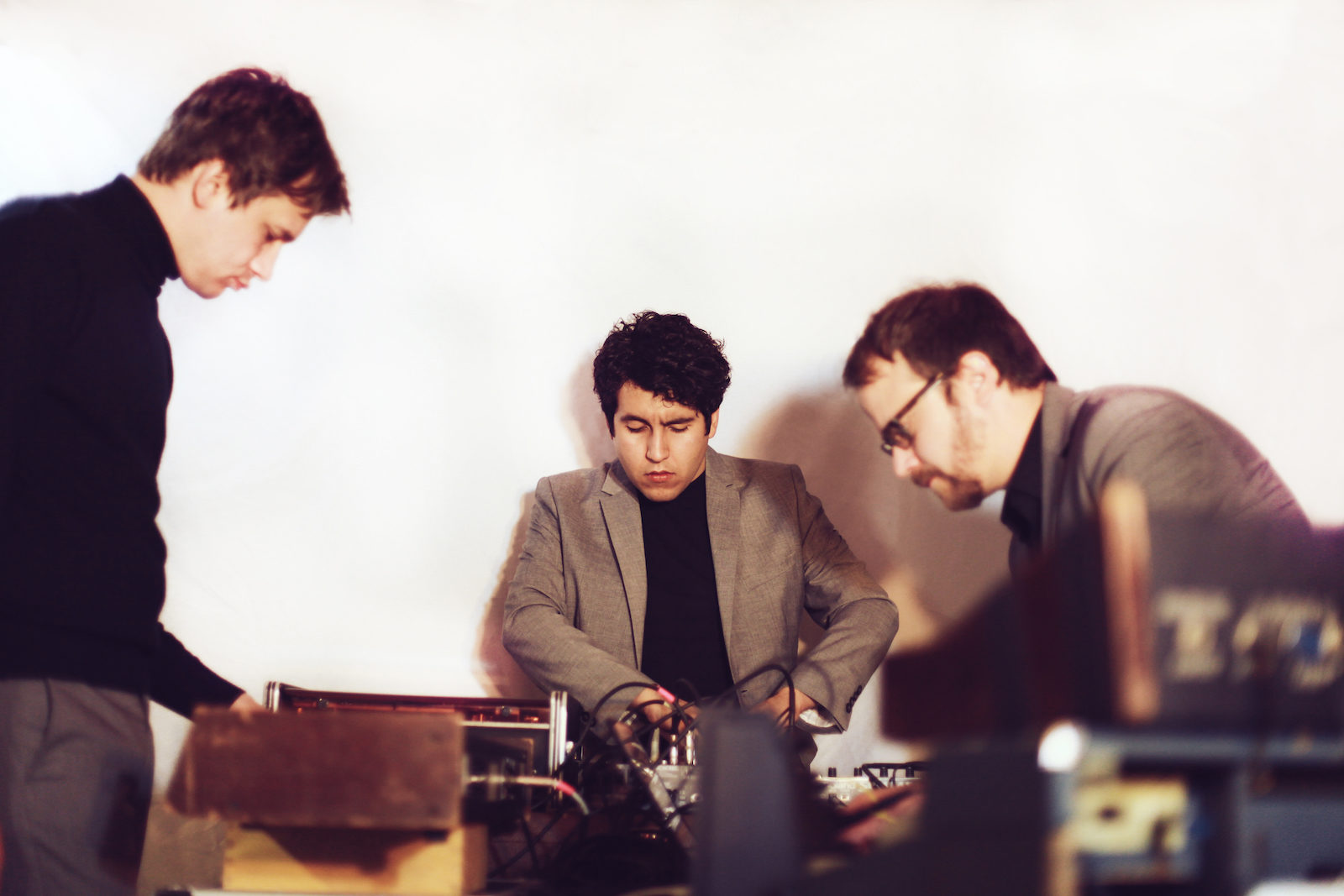
Coupler interferes a lot with its machines. In the live context, we’re improvising a lot with our machines and with each other. That involves a lot of willfulness. It’s the opposite of noninterference.
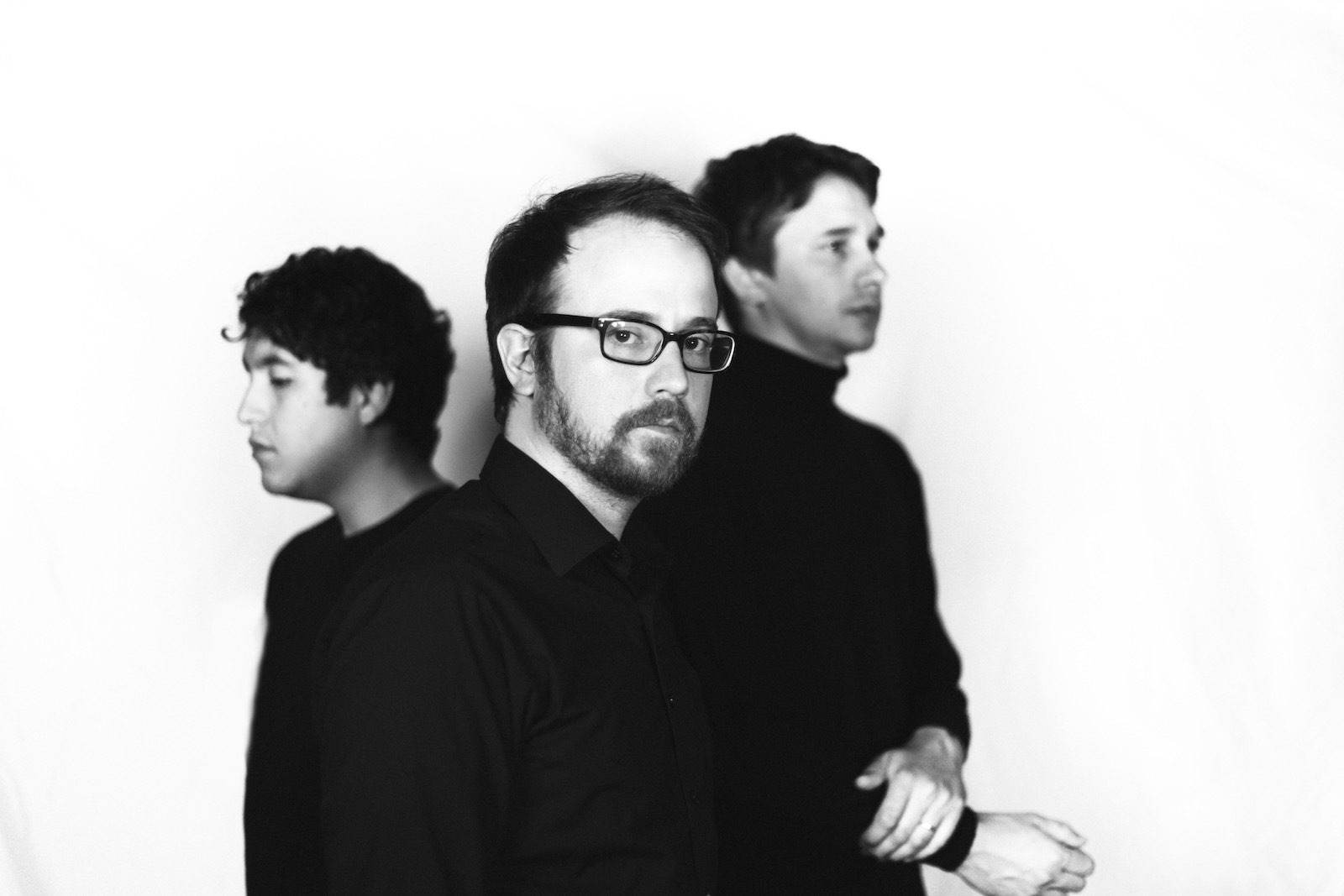
Gifts from the Ebb Tide was recorded before The Blue Room Sessions, but released after; when did you know you had Gifts? Is the title “Gifts from the Ebb Tide” a reference to how the album evolved out of the Blue Room Sessions?
I wouldn’t say one grew out of the other so much as they grew together like good lovers do. They’re two sides of a coin. I guess it makes sense that Blue Room Sessions was released first because it’s two old tracks and two new ones, a foot in the past but pointing to the future. I actually went through a period of doubt about Gifts… where I wasn’t sure if more tracks needed to be added to it, if it needed to be a double album, if it needed to be completely rethought, if it was even relevant to where the project was because we had already recorded live versions of two of the four tracks and begun to move beyond it to become something more collaborative and band-like. And that points to a problem that seems increasingly prevalent: when you release music now because the gestation period is so long it’s difficult to not be in a completely different place creatively from where you were when you made the release. All that to say, I guess I knew I had Gifts… when I revisited the record and decided “no, this is good, it’s finished and it’s going to come out as it is”. That was a few months ago.
As far as the name of the album, any title for me should be both evocative and have a resonance with the work and they very often end up with layered meanings. I don’t remember now where I saw the phrase “gifts from the ebb tide” and I may have intentionally tried to forget. I’ll decontextualize things sometimes so they won’t have baggage for me. But I think it was resonant for a couple of reasons.
First, I’ve always been drawn to water. There’s something incredibly cosmic and metaphysical but also grounding about being close to large bodies of water. My partner Mia and I call that experience the “big water” and one of our favorite things about being in Chicago is the proximity to Lake Michigan. I also used to spend a lot of time with my parents at the coast and still do when I can. I have memories of being small and digging through the sand for shells and things when the tide went out. My uncle told me stories recently about him and my grandfather digging through riverbeds for arrowheads and that seemed resonant. The title to me is evocative of all of this.
Additionally, Coupler started as something I was doing when I wasn’t busy with other things. I used to play in a lot of bands and that kept me very busy. When the tide of those other projects went out I would “find” a Coupler release. The second Coupler record, Sunless, was made very quickly between Lambchop tours. In a way, maybe that one should have been called Gifts from the Ebb Tide because it washed up on the shore like magic.
The online credits for Gifts from the Ebb Tide have you listed as playing “atavism” or “existential dread” or “technophobia” or “solar wind” on certain tracks. A little punk fun with credits, or real references to what emotionally went into those tracks?
It’s a bit of both I guess. On the one hand, I threw those words in as little Easter eggs for anyone that might notice. So kudos, you read the liner notes! But I always got a kick out of how Eno would throw in these whimsical descriptions of sounds alongside very specific technical lists of instruments. “Cricket menace” from the Lodger liners was always one of my favorites. I like the playfulness of things like that so it’s kind of an homage. That said, most of those words came from me listening to the record after the fact and wanting to put them in for one reason or another.
“Atavism” has a double meaning. On the one hand, “Dreams of Strange Continents” was the first thing recorded for the album and is most similar to something that would have been on one of the previous records. It also has the sampled voice of someone I used to play with on it. Reversion to ancestral type indeed. On the other hand, I feel like we live in very atavistic times when ideas that should be long dead are seeping out of the ground again. So I was speaking to that fear as well.
“Existential dread” has always played a role in Coupler’s music. I think because I’m an anxiety-ridden person it tends to turn up in things I write, this feeling of always being slightly ill-at-ease. Additionally, “Pattern Recognition” sounds to me like a chase scene from a future noir film (in case someone who wants to make a third Blade Runner is listening) and has a nervy, paranoid quality to it.
“Technophobia” has been in the Coupler DNA from the beginning. The first record is called America in the Coming Age of Electronics which I saw on a Kurt Vonnegut poster and liked the sound of and thought it would be a funny title because of its out-of-step-ness. And yet, it’s ended up feeling right to me in retrospect because of the steady mission creep of technology into our lives. I think these fears happen with any technological advance since the industrial revolution at least. The advances are just happening exponentially faster now.
“Solar wind”, well, my significant other is a scientist so that one is for her. But it also seems descriptive.
Do you already have an idea where Coupler goes next?
Interestingly enough, yes. We’ve moved into the world of live film scores with a 1925 German silent film directed by Hanns Walter Kornblum called Wunder der Schöpfung (Our Heavenly Bodies in English). That started as a commission by Belcourt Theatre in Nashville but we’ve since taken it to Speed Art Museum, Wexner Center, Sage Chapel at Cornell and some other places. There are more shows for that upcoming. And there’s a second commission coming from Belcourt for an old Ozu silent picture. That will be some time next year. Those two projects have generated a lot of new music so we need to figure out how we want to finish recording those pieces, how to release them, whether they will be done in conjunction with new releases of the films or some other way. I’m not really sure how to approach these things just yet. We’re also talking about writing some new material as a group, which we’ve only done once with something that came out of an improvisation. We’re in this weird transitional phase right now. Coupler started as my solo project and the first two records I mainly did on my own. Blue Room Sessions was obviously a live recording with a big band. Gifts… really started as a solo record but then I had the other guys play on it but I still did most of the heavy-lifting and decision-making. But the way we’ve progressed as a live entity has advanced well beyond where the record is and functions much more like a band. So we need to figure out where we’re at. Beyond all that, we did a sound installation recently called 12X5/Circle of Fifths that used twelve keyboards and twelve amps to create a wonderful field of drone. That was really interesting and it was fun to watch the response from the patrons. I’d love for us to do more of that kind of work in addition to more soundtrack music.
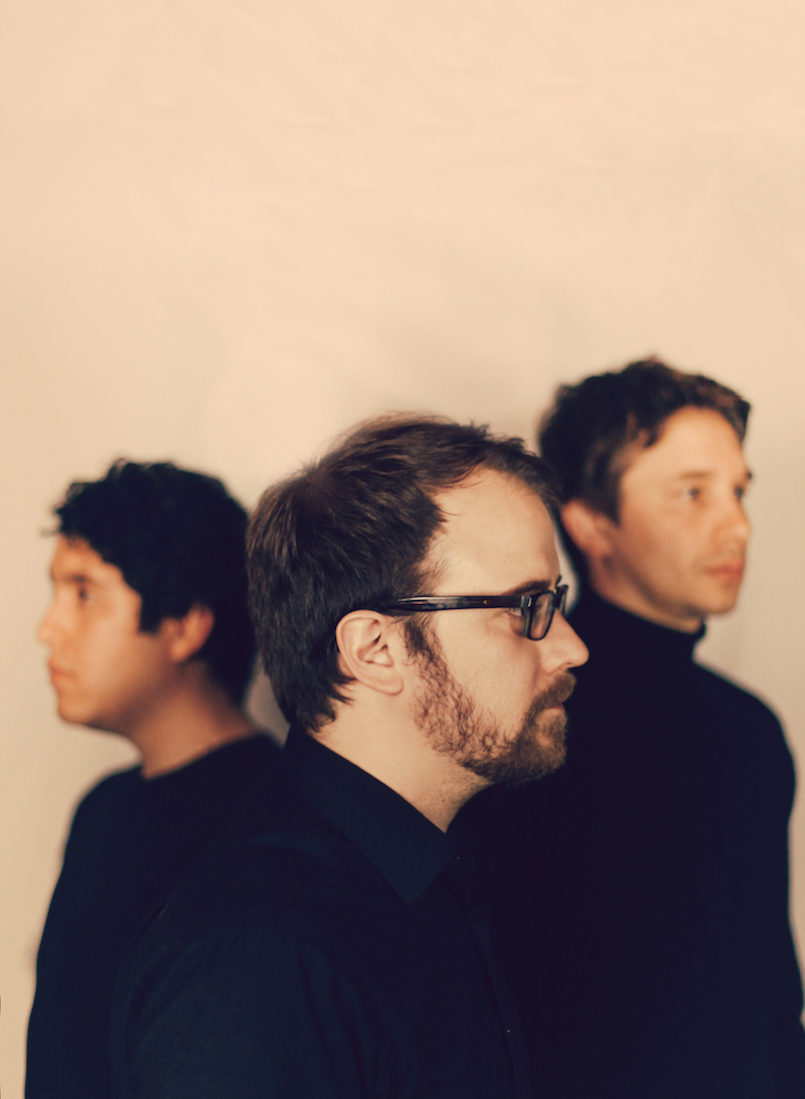
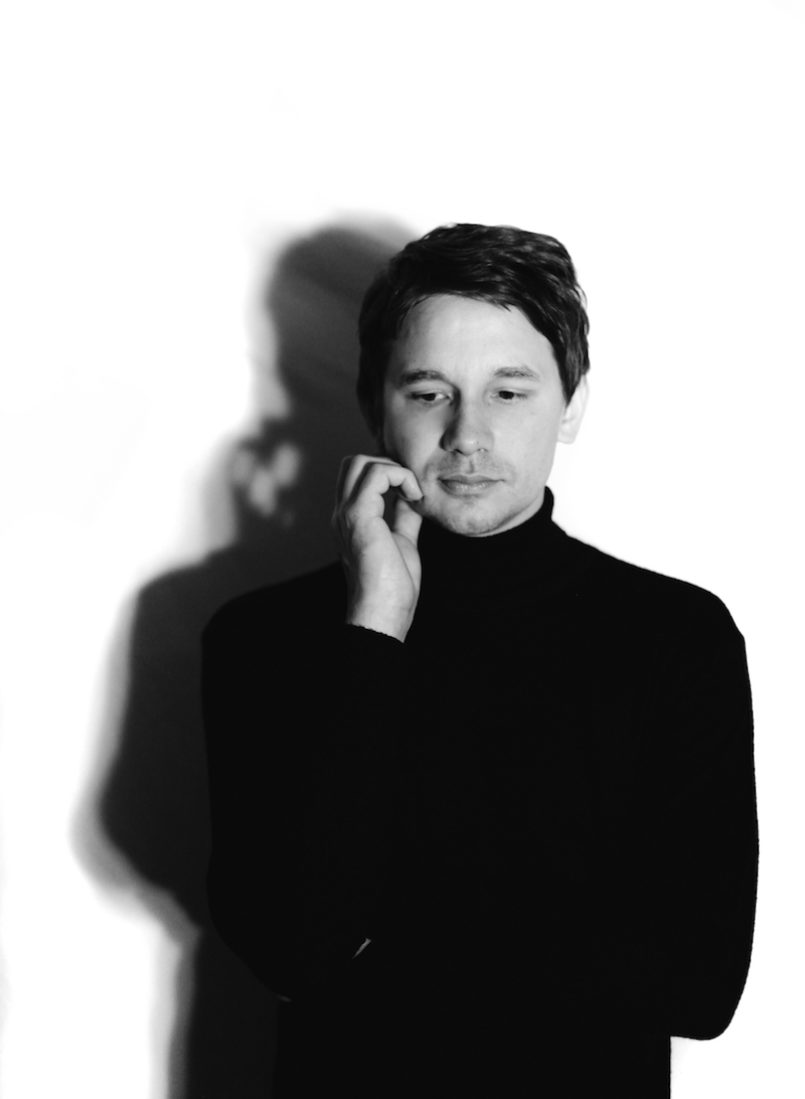
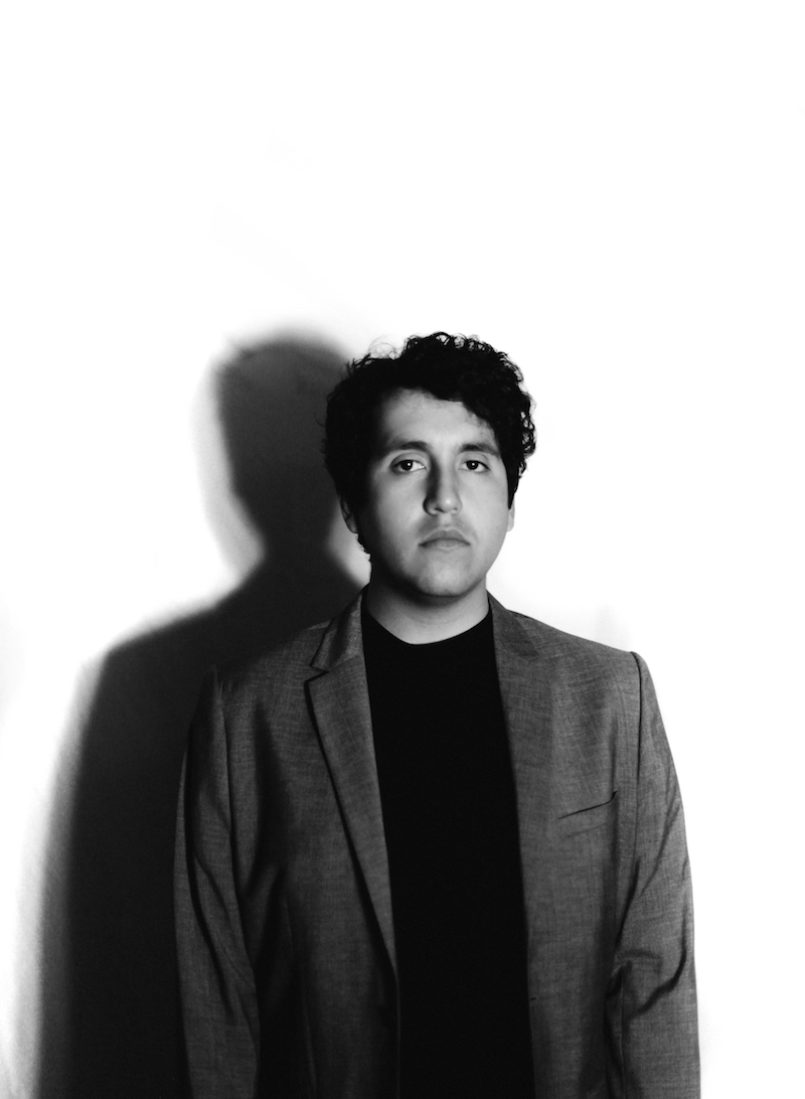
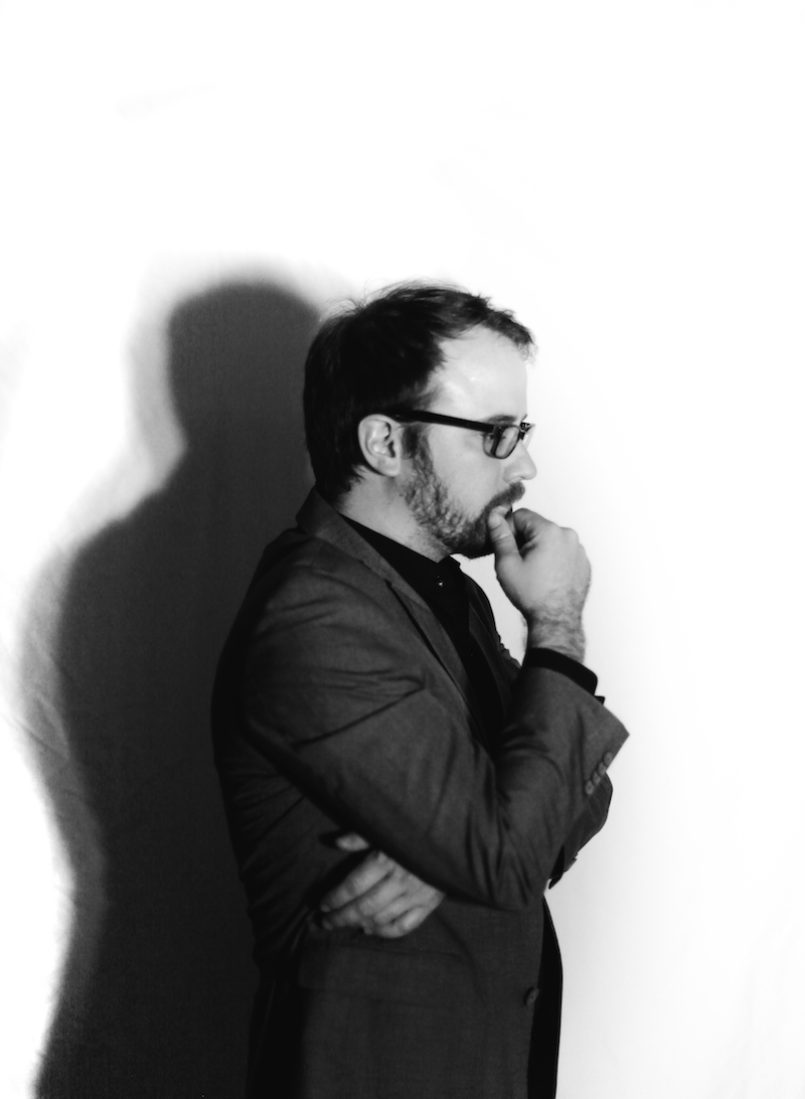
Rodrigo Avendano and Rollum Haas – how did you three meet?
These guys are two of my best friends. I first met Rollum right before I moved to the Nashville area in 2000. We’ve played in a few different bands together by now. He’s a masterful drummer but also a synth and drum machine wizard, unique guitar player, bassist and producer. He’s also been my guru for great 80s music for years. He recently turned me on to Art of Noise’s first EP. “Moments in Love” was a revelation for me. It really showed me that you could do these long, weird things that were also pop.
Rodrigo and I were roommates for a while and have also played in a few bands together. He was part of HeCTA’s live band. He’s also a Jack-of-all-trades musician/producer. The two of us and Rollum worked together at a record store in Nashville. Rodrigo went from customer to co-worker to friend to roommate to bandmate, a very Nashville progression. He’s like a younger brother with an old soul.
It’s also worth mentioning Matt Glassmeyer here, who did some wonderful horn-playing, singing, and percussion on the record. He grew up with my friends Cortney and Todd Tidwell outside of Nashville and has a uniquely Nashville story: played music growing up, the conservatory in Miami, a brief stint in the Mavericks horn section, part of the free jazz scene in New York, back to Nashville. He and his dad have both played with Kenny Rogers. I wanted to meet him because he played contra-alto clarinet on a Cortney track. I loved what he did and as a longtime fan of Bitches Brew, I felt I had to play music with anyone who knew how to make that low, snake-y sound. Exemplary human being. Good at everything. Surfs.
What will forthcoming live shows be like? What’s the set up?
It’s going to be a mix. The two Chicago shows are solo. That’s me with a couple of synths, a drum machine, mixer, some guitar pedals and an amp. Pretty straightforward. Rollum usually plays a synthesizer or two though he added a second drum machine for a show we did recently. Rodrigo has been using a synth too lately but he mainly does a lot of live dub-style mixing and treatments of instrument signals I send him. He’ll be triggering some things from a laptop as well using Ableton. Some of these shows will be with the film and some will be without.
What instrument is making that high-pitched but thick-toned melody above “Invention 2: Pattern Recognition” from the Blue Room Sessions?
I’m not totally sure what you’re referring to so it could be any number of things. There’s the MS-20 being triggered by the drum programming that does some melodic things. The upright bass is playing a strange-sounding repeated figure throughout. There’s also a track that I think is an organ drone going through the Moog MuRF step filter. That has a melodic quality to it. The break has some midi-Mellotron. Could be that.
I’m not surprised any Lambchop member is making any kind of music; to me, Lambchop was one of those multi-faceted, song-shape shifters, like Tindersticks, making what sounded right, able to go where the song needed. Could you bring Coupler ideas back into Lambchop? Have you, aside from the remixes?
I try not to compartmentalize my ideas too much. That obviously happens a bit organically but I tend to seed the clouds wherever I go. To me, HeCTA’s The Diet, Lambchop’s FLOTUS and Coupler’s Blue Room Sessions and Gifts from the Ebb Tide all share DNA and influenced each other in circular ways. There was a lot of overlap in their respective timelines so it was natural for me that my ideas would migrate between them in ways that were both implicit and explicit.
A fair amount of the Coupler aesthetic made its way onto the HeCTA record and ended up on FLOTUS by extension. The seeds for the ideas that became “Silenzio” came from me researching insane (and annoying) amounts of dance music for HeCTA. When I played “Silenzio” for Kurt he was adamant about doing something like it so I wrote the music for what became “The Hustle” for Lambchop. That’s why the length, tempo, drum programming, feel and general contour of the two are so similar. Nevertheless, I tried to make them as different as possible within that basic framework.
Pre-orders of the new album include a limited-edition Ryan Norris print. Tell us about that?
My grandmother on my dad’s side was a painter. I’m not sure I believe in an “artist gene” but I’ve always felt like my creative leanings came from her. She’s the only person older than me in the family I can remember doing anything in the arts. The women could all read music and play piano because that’s just what you did. But no one except her made things that I can remember though one of my cousins is a painter now. Anyway, I drew a lot growing up. My first career choice was to be a visual artist of some kind. Then I got into art classes and I couldn’t paint. I’d been okay at drawing but I just couldn’t figure out how to mix colors and everything always turned brown. It’s funny in retrospect because I feel like the way I mix sound is painterly in a lot of ways. So I gave up on art around the time I started to play music but I continued to dabble, mainly in college. It scratches the same itch for me that sampling and music editing do; pulling things out of the culture, moving them around, re-contextualizing them. These prints are some pieces I made recently. Funny enough, I see similarities between these pieces and my grandmother’s work.
East coast guy question: What’s it like to record music like this in Nashville?
I’m in Chicago as of about a year ago but I was in Nashville for 15 years and felt I always had to go to great lengths when I traveled to explain to people that country music isn’t the only thing that comes out of there. And it isn’t. I made one proper country record while I was in Nashville (KORT, which featured Cortney Tidwell, Kurt Wagner and a cross-section of people that were involved in Cortney’s band and Lambchop) and sure I occasionally did sessions and played with people that would qualify as Americana or something along those lines but for as long as I was there was a thriving rock scene as well as an experimental and electronic scene that didn’t get quite as much attention but exists nevertheless. Nashville is full of people that are passionate and knowledgeable about music in a general sense. Almost everyone there is or has been involved in music in some way or another, and on the ground level, people are just curious about things and eager to be impressed. But being a musician in Nashville is like working in the auto industry in Detroit or being in movies in L.A. or politics in D.C. It’s just what everyone does and that can get oppressive. But you’re always hanging out in studios, surrounded by incredible musicians and great gear and those are good problems to have.
And the people that help make the music, that record it? In my experience, they’re very open to different things. Engineers can be a conservative bunch so you have to push them a bit sometimes but that’s not so difficult. Most of this record was home-recorded though. “Pattern Recognition” I worked on for a bit with Roger Moutenot who you may know from the Yo La Tengo records he produced. I think we did the horns and some of the synths at his place. I got my friend Jeremy Ferguson to mix the record using my mixes for reference. He engineered most of the HeCTA record and FLOTUS and I liked the results sonically so it made sense to me to have him do the final mix. John Baldwin who did the mastering was really into the record. He does a lot of work for Light in the Attic. I had to show up to help out and lend ears for a second round of mixing for Blue Room Sessions because the first mix wasn’t quite what I wanted. And it’s helped us tremendously to have people like Ben Swank at Third Man as fans. That record wouldn’t have happened otherwise. I guess what I’m getting at is that everyone is so all over the map and doing so many different kinds of things that it kind of doesn’t matter. You just get it done. But there’s not necessarily a lot of market share available for electronic music in Nashville except when Bassnectar rolls through town.
You also notice that younger musicians and consumers of music, the kids that come in the record store, for example, are much less tribal about genre distinctions. They don’t really seem to see them. I guess that’s a result of growing up with the Internet. All that rambling to say, Nashville is a great place to cut your teeth and make any kind of music. It definitely made me the musician I am today.
